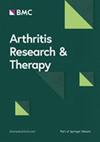赛库单抗治疗银屑病关节炎的四年疗效、安全性和药物保留率:意大利多中心队列的真实案例
IF 4.9
2区 医学
Q1 Medicine
引用次数: 0
摘要
在为期 48 个月的随访期间,评估1) secukinumab 的长期有效性和安全性;2) 药物保留率 (DRR);3) 合并症和 bDMARDs 对 secukinumab 的 MDA 和 DAPSA 缓解/低疾病活动性 (LDA) 的影响。2016年至2023年期间,意大利各中心对连续接受secukinumab治疗的PsA患者进行了前瞻性随访。记录了疾病特征、既往/正在接受的治疗、合并症和随访时间。在开始治疗后的 6 个月和 12 个月以及 48 个月(T48)内每年评估一次治疗反应。DRR根据临床和人口统计学特征、合并症和bDMARDs疗程进行评估。不良事件(AE)均有记录。共有685名患者[42.5%为男性]入选;32.9%的新患者接受了secukinumab治疗;74.2%的患者合并症≥1种。总体而言,赛库单抗改善了T48时的治疗效果:新患者与非新患者相比,疾病活动度更低[DAPSA 4.0 (1.4-8.1) vs. 6.0 (2.2-10.4); p = 0.04];76.9%的新患者和66.2%的非新患者达到了MDA;无合并症与1-3种合并症相比,MDA为78.8% vs. 73.3% (p 3种合并症) 78.8% vs. 48.7% (p 3种合并症)。233名患者因疗效下降而停止治疗,41名患者因AE而停止治疗。T48时的总体DRR为66%,根据bDMARDs系列(p < 0.001)、联合csDMARDs的使用(p = 0.016)、BMI(p = 0.037)以及单/oligo关节炎与多关节炎(p = 0.012)的不同而存在差异。事实证明,塞库单抗安全有效,患者的病情得到了持续缓解,4年后的留药率显著提高。关于这一主题的已知信息有哪些?- 塞库单抗是一种治疗银屑病关节炎(PsA)的新型药物,但缺乏实际生活中长期安全性和有效性的数据。本研究有何新意?- 我们的研究结果证实,在为期48个月的随访期间,该药物在所有PsA领域(关节炎、粘连炎、趾关节炎、脊柱症状、银屑病、PROs和炎症指标)均具有安全性和显著有效性。- 48 个月的药物保留率(DRR)相当高。主要临床疾病模式(外周/轴向受累)、男性性别、年龄和是否存在合并症并不影响secukinumab的长期药物保留率。- 一线 bDMARDs 似乎更有利于实现 MDA 和缓解/低疾病活动性 DAPSA 以及药物保留,而少于 3 种合并症对这些结果没有影响。本研究对研究、实践或政策有何影响--本研究支持secukinumab的有效性,它似乎也是多种药物治疗失败患者的有效选择;secukinumab的安全性意味着它可用于合并症、年龄较大、体重指数较高的患者,尤其是心血管疾病和代谢综合征患者。本文章由计算机程序翻译,如有差异,请以英文原文为准。
Four-year effectiveness, safety and drug retention rate of secukinumab in psoriatic arthritis: a real-life Italian multicenter cohort
to evaluate over a 48-month follow-up period the: 1) long-term effectiveness and safety; 2) drug retention rate (DRR); 3) impact of comorbidities and bDMARDs line on MDA and DAPSA remission/low disease activity (LDA) of secukinumab in a multicenter Italian cohort of PsA patients. Consecutive PsA patients receiving secukinumab were followed prospectively in Italian centers between 2016 and 2023. Disease characteristics, previous/ongoing treatments, comorbidities and follow-up duration were recorded. Treatment response was evaluated at 6 and 12 months after initiation, and every year up to 48 months (T48). DRR was assessed according to clinical and demographic features, comorbidities and bDMARDs line. Adverse events (AE) were recorded. Six hundred eighty-five patients [42.5% male] were enrolled; 32.9% naïve received secukinumab; 74.2% had ≥ 1 comorbidity. Overall, secukinumab yielded improved outcomes at T48: naïve maintained lower disease activity vs. non-naïve [DAPSA 4.0 (1.4–8.1) vs. 6.0 (2.2–10.4);p = 0.04]; 76.9% naïve and 66.2% non-naïve achieved MDA; MDA no comorbidities vs. 1–3 comorbidities 78.8% vs. 73.3% (p < 0.05), and MDA no comorbidities vs. > 3 comorbidities 78.8% vs. 48.7% (p < 0.001). DAPSA-REM and DAPSA-LDA rates were higher in naïve patients, albeit similar between those without comorbidities vs. 1–3 comorbidities, and slightly lower in those with > 3 comorbidities. Treatment was discontinued in 233 patients due to loss of effectiveness, and in 41 due to AE. The overall DRR at T48 was 66%, with differences according to bDMARDs line (p < 0.001), use of combined csDMARDs (p = 0.016), BMI (p = 0.037) and mono/oligoarthritis vs. polyarthritis (p = 0.012). Secukinumab proved safe and effective, and patients achieved sustained remission with a notable drug retention rate at 4 years. What is already known on this topic? • Secukinumab is a novel drug for psoriatic arthritis (PsA), but real-life long-term safety and effectiveness data are lacking. What this study adds? • Our findings confirmed the safety and notable effectiveness on all PsA domains (arthritis, enthesitis, dactylitis, spinal symptoms, psoriasis, PROs and inflammatory markers), over a 48-month follow-up period. • The drug retention rate (DRR) is considerably high at 48 months. The main clinical disease pattern (peripheral/axial involvement), male gender, age, and the presence of comorbidities do not influence the DRR of secukinumab over time. • The first line of bDMARDs seems to favor MDA and remission/low disease activity DAPSA achievement and drug retention, while fewer than 3 comorbidities have no impact on these outcomes. How this study might affect research, practice or policy • This study supports the effectiveness of secukinumab, which also seems to be a valid option for multi-drug failure patients; the safety of secukinumab means it can be used in patients with comorbidities, older age, higher BMI, and in particular cardiovascular conditions and metabolic syndrome.
求助全文
通过发布文献求助,成功后即可免费获取论文全文。
去求助
来源期刊

Arthritis Research & Therapy
RHEUMATOLOGY-
CiteScore
8.60
自引率
2.00%
发文量
261
审稿时长
14 weeks
期刊介绍:
Established in 1999, Arthritis Research and Therapy is an international, open access, peer-reviewed journal, publishing original articles in the area of musculoskeletal research and therapy as well as, reviews, commentaries and reports. A major focus of the journal is on the immunologic processes leading to inflammation, damage and repair as they relate to autoimmune rheumatic and musculoskeletal conditions, and which inform the translation of this knowledge into advances in clinical care. Original basic, translational and clinical research is considered for publication along with results of early and late phase therapeutic trials, especially as they pertain to the underpinning science that informs clinical observations in interventional studies.
 求助内容:
求助内容: 应助结果提醒方式:
应助结果提醒方式:


